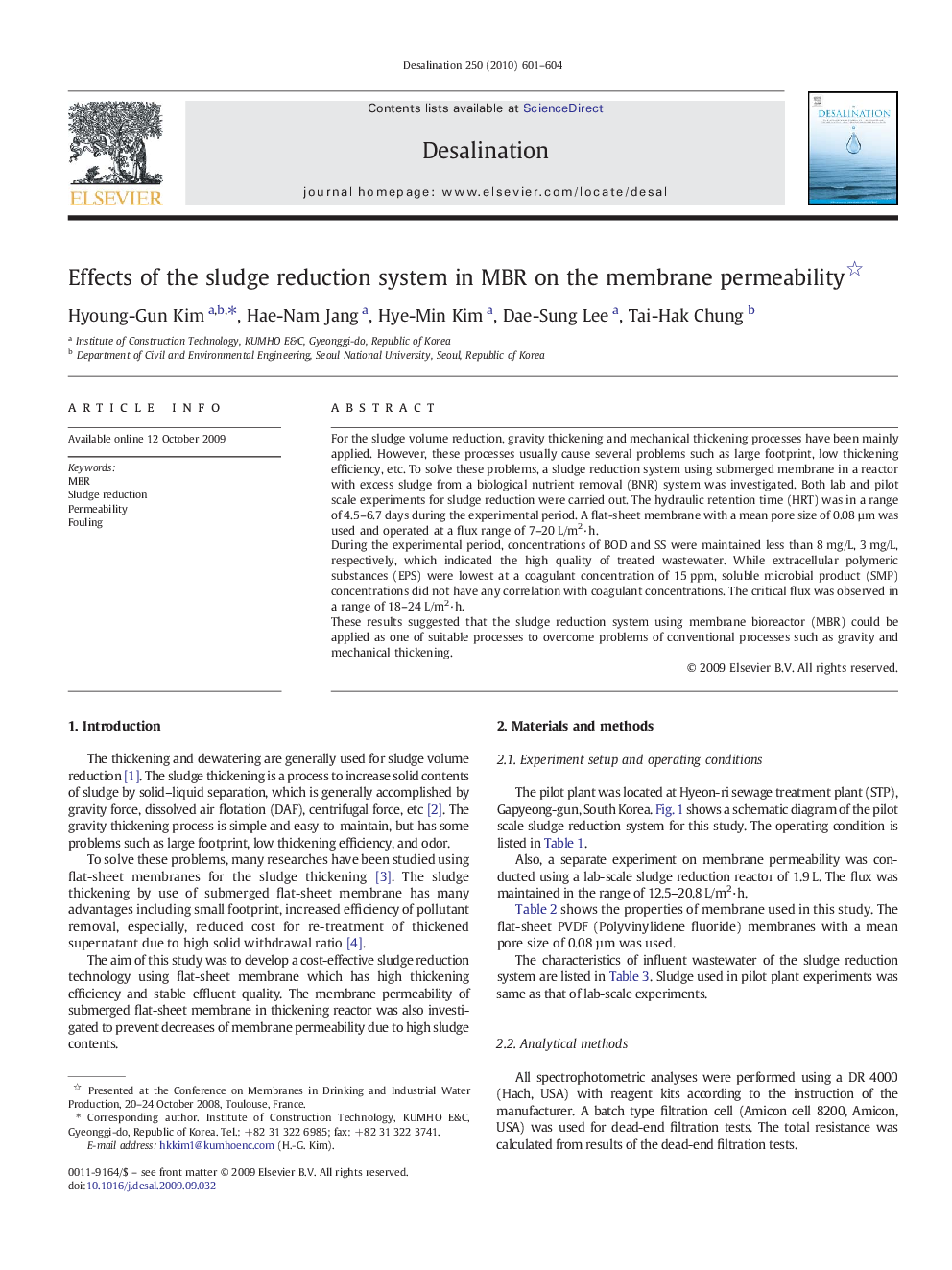| Article ID | Journal | Published Year | Pages | File Type |
|---|---|---|---|---|
| 626055 | Desalination | 2010 | 4 Pages |
For the sludge volume reduction, gravity thickening and mechanical thickening processes have been mainly applied. However, these processes usually cause several problems such as large footprint, low thickening efficiency, etc. To solve these problems, a sludge reduction system using submerged membrane in a reactor with excess sludge from a biological nutrient removal (BNR) system was investigated. Both lab and pilot scale experiments for sludge reduction were carried out. The hydraulic retention time (HRT) was in a range of 4.5–6.7 days during the experimental period. A flat-sheet membrane with a mean pore size of 0.08 µm was used and operated at a flux range of 7–20 L/m2·h.During the experimental period, concentrations of BOD and SS were maintained less than 8 mg/L, 3 mg/L, respectively, which indicated the high quality of treated wastewater. While extracellular polymeric substances (EPS) were lowest at a coagulant concentration of 15 ppm, soluble microbial product (SMP) concentrations did not have any correlation with coagulant concentrations. The critical flux was observed in a range of 18–24 L/m2·h.These results suggested that the sludge reduction system using membrane bioreactor (MBR) could be applied as one of suitable processes to overcome problems of conventional processes such as gravity and mechanical thickening.
